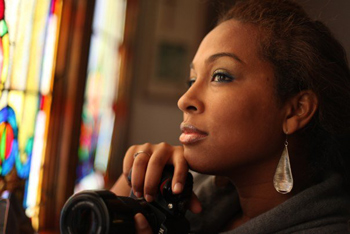My 79-year-old grandmother wants a Facebook page. Though she needs a cheat sheet to remember what to do after pressing the computer’s power button, she wants to follow me wherever I am in the world and remain connected to the friends, stories and work I’ve introduced her to. For a woman who only finished high school, technology beckons as a tool powerful enough to bridge coasts, continents and generations. And Granny’s Christian desire to take part in another’s story has critical implications for churches and leaders in an increasingly globalized society: Social networking is a way to bridge the distances dividing humanity and subsequently connect the church to the world.
Raised by a gadget-wielding father, I hold no memories of a time before the clunky gray monitor -- then still an Apple, not a Mac -- and the recycled shoebox of games on floppy disk offered possibility. The earliest window into my missional vocation was perhaps my love for “Where in the World is Carmen San Diego?” A committed techie, Dad trained my tiny fingers to type by third grade, introduced me to the Internet and email in fifth grade and smiled proudly when I entered my first website competition in seventh grade. In our house, technological access was necessary, not for personal achievement, but to broaden our world view beyond our rural locale.
Therein lie the faithful possibilities of social media. A few months ago the world was shaken by the Iranian presidential election. But the driving force of the story was not policies or presidents but rather the global response via Twitter of support and solidarity for Iranian citizens. Media outlets around the world were shocked by the outpouring of tweets (the term for 140-word outputs for the micro-blogging service) that made the principles of freedom, voice and solidarity shine like gold. Many rallied for the Iranians protesting in the streets. But the grandeur of the real-time display wasn’t in the politics. It was in the witness.
This is perhaps the very heart of Christian community -- connecting, confessing and witnessing together the work of God. True, the tweets from Tehran weren’t quoting Christian Scripture, but they signify the power and potential to be profoundly tied into the fabric of humanity. Though we are connected in immeasurable ways, from the clothes we wear to the cars we drive, we can’t always see our global neighbors face to face. But technology provides one way to still be touched and moved by another’s life. It also offers a chance for leadership to rise from the margins and the masses. In a world where many people have cell phones but no indoor plumbing, social networking leads the way in offering the ministry of presence and sharing in a common call to action.
In comes down to the Incarnation. How do we embody the practice of showing forth the presence of God in context and in community? Whether one identifies with a mainline denomination, a new monastic community or as an international missionary, the many facets of the church have again been swept up in conversation of what exactly the mission of Christ, God with us, looks like.
Jesus was a brilliant and compassionate communicator, whether you collected taxes or desperately needed a healing touch. To communicate and offer leadership like that in this age, the church has to be willing to step beyond conventional boundaries. Church leaders (and not youth ministers, alone!) are pressed to speak the message of the gospel in alternate settings. Social media, then, is a new and ever-expanding language prime to be explored and not so foreign that the Holy Spirit cannot manifest in its infinite sound bites.
The idiomatic nuances of a world lived online don’t render tradition, doctrine or the local category of the communion of saints obsolete. Rather, tools for social media can be tools for social -- and spiritual -- change. And, for those who find cross-cultural exchange a worthy endeavor of reconciliation and love, now is the time to embrace the invisible networks that make the witness of the church all the more real.
Many charities, churches and non-profits are on board. Instead of just hearing about building a house, serving food in the streets or digging wells in faraway places, social media outlets provide live access to signs of hope in the world. What’s the next best thing for Granny Adkins, who can’t be on site with my friends for a well-digging in Uganda? Watching it with me live in the living room, knowing she too is invited to rejoice deeply in the signs of the kingdom of God that truly are all around. And, when she can’t visit with me there or accomplish the same international feat, she can continue to pray, fast and help serve the lemonade at her local Habitat build.
Ultimately, the Gospels teach that the kingdom of God is all around us. On the Internet or not, that kingdom can be difficult to discern. But, if you’re willing to dig deep enough, even YouTube might yield some powerful, transformative results. The church just has to believe that it is worth the time to look and believe that the invisible church has a message to bear in an invisible movement.








